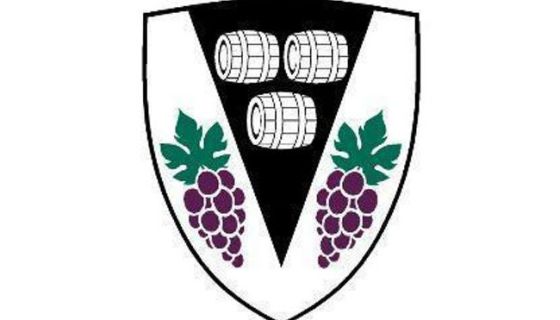One month ago, dozens of the pluckiest of the world's wine professionals sat the notoriously difficult exam for the Masters of Wine qualification. This year, the theory part was extended by one paper in a change to the structure that was announced several years ago. The subject that has been extended is vinification, and the two papers that now cover this topic are clearly divided into questions concerning pre- and post-bottling matters.
When I sat the exam several years ago, this seemingly harmless distinction didn't exist, which made the scope of some questions too large to answer in the time provided. 'Discuss the role of sulphur within winemaking' for example, would require covering post-harvest, pre-fermentation, mid-fermentation, post-fermentation, bottling and post-bottling. It was therefore decided that dividing the papers into two would be easier to manage. The new 'handling of wines' paper is also kinder to students in that the choice of questions is unrestricted. Otherwise, the character and content of the questions follows the tried and tested format of recent years.
The tasting exam is similarly conventional, with no controversial wine choices. This year marks the first appearance of an English sparkling wine, though students were not required to identify origin for this particular wine. I also notice that paper three has a multiple choice question for identifying the residual sugar of certain sweet wines – this is a change from previous years, when an exact figure was required without any options being offered.
If all this hasn't put you off, then you'll be delighted to hear that applications for places on the 2015/16 student intake are open until the end of July. And for a glimpse into what happens after you pass the theory and practical exams, see Diary of an MW student – part 60.
THEORY PAPER
THEORY PAPER 1 – THE PRODUCTION OF WINE – PART 1 (VITICULTURE)
(THREE questions to be answered, ONE from Section A and TWO from Section B)
Section A
1) What are the causes of grapevine trunk diseases, such as Esca, and what are the best strategies to combat them?
2) What nutrients are important to the grapevine for the production of quality grapes, and why?
Section B
3) When and how does frost pose a risk to grape production? Evaluate the different methods of frost protection available to the grape grower.
4) Which are the most suitable grape varieties for the production of high quality traditional method sparkling wines, and why?
5) Why does density of vine plantation vary from vineyard to vineyard? Assess the advantages of low and high density plantings.
6) How might the costs of growing grapes and managing a vineyard affect the price of a bottle of wine?
THEORY PAPER 2 – THE PRODUCTION OF WINE – PART 2 (VINIFICATION AND PRE-BOTTLING PROCEDURES)
(THREE questions to be answered, ONE from Section A and TWO from Section B)
Section A
1) Why is it important to consider pH during the winemaking process?
2) What opportunities exist, as part of the winemaking process, for the winemaker to bring complexity to his or her wine?
Section B
3) How can sweetness be achieved in non-fortified wines through viticulture and vinification?
4) What contributions do yeasts make to wine, and how far can a winemaker control these?
5) Write short notes on how each of the following are managed in a winery:
• Juice clarity and turbidity
• Wine clarification
• Wine stabilisation
6) Discuss acid adjustment, chaptalisation and dealcoholisation with particular regard to balance in wine.
THEORY PAPER 3 – THE PRODUCTION OF WINE – PART 3 (HANDLING OF WINES)
(Answer TWO questions from the FOUR listed below)
1) Outline the key technical considerations involved in the choice of final packaging for wine.
2) In the world of highly automated and computer controlled bottling lines, to what extent are quality control checks becoming obsolete?
3) How might protein and tartrate stability in wine be achieved, and managed?
4) Assess the various methods of transporting wine in bulk; what precautions should be taken from a QA perspective?
THEORY PAPER 4 – THE BUSINESS OF WINE
(THREE questions to be answered, ONE from Section A and TWO from Section B)
Section A
1) Is consolidation among wine producers good or bad for consumers?
2) As the brand manager of a 500,000 case wine brand, what five key statistics would you most closely monitor to gauge the performance of your brand, and why?
Section B
3) How can a sommelier or restaurant buying manager ensure he/she is delivering good value both to his/her customers and owner? How may sustainable profit in the on-trade be maximised?
4) Have supermarkets been a positive or negative force for mainstream wine consumers around the globe?
5) You are a wine producer in Pommard. What are your main marketing strengths? How can you grow your business?
6) Assess successful approaches to social media by the wine industry.
THEORY PAPER 5 – CONTEMPORARY ISSUES
(TWO questions to be answered, ONE from Section A and ONE from Section B)
Section A
1) What are the most significant current trends in the fine wine market?
2) What are the key factors behind the current worldwide success of sparkling wines?
Section B
3) Is the “natural wine” movement losing momentum? What is its future?
4) Are wine competitions and the resulting awards they bestow important to establishing a successful brand?
5) Fortified wines are diverse in style; why are they not more popular?
TASTING PAPER
PRACTICAL PAPER 1
Question 1
Wines 1-4 are all from the same region and the same vintage.
For each wine:
a) Identify the specific origin as closely as possible (4x12)
With reference to all four wines:
b) Discuss quality, with specific reference to the region of production (40)
c) Identify the vintage (12)
Question 2
Wines 5-6 are both made from the same single grape variety, but come from different countries.
With reference to both wines:
a) Identify the grape variety (1x10)
Then for each wine:
b) Identify the origin as closely as possible (2x10)
c) Discuss quality, with particular reference to winemaking (2x10)
Question 3
Wines 7-12 are all made from single, different grape varieties. For each wine:
a) Identify the grape variety (6x10)
b) Identify the country and region of origin (6x5)
c) Comment on quality, style and potential for further ageing (6x10)
1. Chablis, Domaine Henri. 2012. Burgundy, France (12.5%)
2. Chablis Grand Cru Vaudésir, Domaine Louis Michel. 2012. Burgundy, France (13%)
3. Bâtard Montrachet Grand Cru, Domaine Paul Pernot. 2012. Burgundy, France (13.5%)
4. Puligny Montrachet, Jean Marc Boillot. 2012. Burgundy, France (13%)
5. Chenin Blanc, Tierhoek. 2012. Piekenierskloof, South Africa (14%)
6. Vouvray, Marc Brédif. 2013. Loire, France (12.5%)
7. Albariño, Pazo de Villarei. 2013. Rias Baixas, Spain (13%)
8. Semillon, Moss Wood. 2013. Margaret River, Western Australia (13.5%)
9. Dürnsteiner Kellerberg, Grüner Veltliner Smaragd, FX Pichler. 2012. Wachau, Austria (14.5%)
10. Gewurztraminer, Domaine Trimbach. 2012. Alsace, France (14%)
11. Condrieu, Domaine Barou. 2013. Rhône, France (14%)
12. Riesling, Cuvée des Comtes d’Eguisheim, Léon Beyer. 2007. Alsace, France (13%)
PRACTICAL PAPER 2
Question 1
Wines 1-3 are made from Pinot Noir. For each wine:
a) Identify the origin as closely as possible (3x7)
b) Comment on winemaking (3x4)
c) Discuss quality and maturity, with particular reference to the wine’s ability to improve (3x9)
d) Comment on the commercial appeal (3x5)
Question 2
Wines 4-6 come from three different countries. Each wine is made from a different single, or predominant, grape variety.
For each wine:
a) Identify the origin as closely as possible (3x7)
b) Identify the predominant grape variety (3x5)
c) Discuss the method of production (3x5)
d) Comment on style, quality and potential to improve (3x8)
Question 3
Wines 7-10 are from the same country, but from two different areas. Wines 7 and 8 come from one wine region, wines 9 and 10 from another.
For each wine:
a) Identify the origin and grape variety(ies) as closely as possible (4x10)
b) Discuss the method of production (4x5)
c) Comment on quality and maturity (4x10)
Question 4
Wines 11-12 are from the same country and region, but from different (predominant) grape varieties. For both wines:
a) Identify the country, region and respective predominant grape varieties (20) For each wine:
b) Discuss the method of production (2x5)
c) Comment on quality within the context of the region of origin (2x10)
1. Monthelie, 1er Cru Clos Les Champs Fulliot, Bouchard Père et Fils. 2010. Burgundy, France (13.5%)
2. Pinot Noir, Greywacke. 2012. Marlborough, New Zealand (14%)
3. Gevrey Chambertin, 1er Cru Les Corbeaux, Domaine Bruno Clavelier. 2009. Burgundy, France (13%)
4. Rioja Reserva, Bodegas Muga. 2010. Rioja, Spain (14%)
5. Portrait Shiraz, Peter Lehmann. 2013. Barossa Valley, Australia (14.5%)
6. Fleurie, Bouchard Père et Fils. 2013. Beaujolais, France (12.5%)
7. Chianti Classico, Felsina Berardenga. 2011. Tuscany, Italy (14%)
8. Brunello di Montalcino, San Polino. 2009. Tuscany, Italy (14%)
9. Nebbiolo delle Langhe, Castello di Verduno. 2013. Piemonte, Italy (13.5%)
10, Barolo, DaGromis, Gaja. 2010. Piemonte, Italy (14%)
11. Merlot, Beringer. 2011. Napa Valley, California (14.5%)
12. ‘Magnificat’, Franciscan. 2011. Napa Valley, California (14%)
PRACTICAL PAPER 3
Question 1
Wines 1-4 are all from Europe. For each wine:
a) Discuss the major factors involved in the method of production, with particular reference to the role of yeast (4x15)
b) Comment on quality and style (4x10)
Question 2
Wines 5-8 are from three different countries. For each wine:
a) Identify the region of origin (4x5)
b) Comment on quality and maturity (4x10)
c) Discuss the method of production (4x10)
Question 3
Wines 9-12 are from four different countries. For each wine:
a) State alcohol level (%) (4x2)
b) Place a tick in the appropriate box for the residual sugar (4x2)
c) Identify the origin as closely as possible (4x5)
d) From what you can detect in the glass, describe the method of production from vineyard to bottle (4x10)
e) Comment on quality and maturity (4x6)
1. Billecart-Salmon Vintage Extra Brut. 2006. Champagne, France (12%)
2. Knightor Vineyard Rosé. N.V. Cornwall, England (11.5%)
3. Inocente Fino, Valdespino. N.V. Jerez (Sherry), Spain (15%)
4. Arbois, Savagnin, Domaine de la Pinte. 2006. Jura, France (13.5%)
5. Quinta da Cavadinha Vintage Port, Warre. 1998. Douro, Portugal (20%)
6. JMK Shiraz VP. 2012. Kalleske, Australia (18.5%)
7. Matusalem, Gonzalez Byass. N.V. Jerez (Sherry), Spain (20.5%)
8. Colheita, Justino. 1996. Madeira, Portugal (19%)
9. Brauenberger Juffer-Sonnenuhr Riesling Spätlese, Max Ferd Richter. 2008. Mosel, Germany (8.5%)
10. Riesling Icewine, Inniskillin. 2012. Ontario, Canada (9.5%)
11. Tokaji Aszú, 5 Puttonyos, Royal Tokaji Wine Company. 2008. Tokaji, Hungary (11.5%)
12. Vin Santo, Isole e Olena. 2005. Tuscany, Italy (13%)














